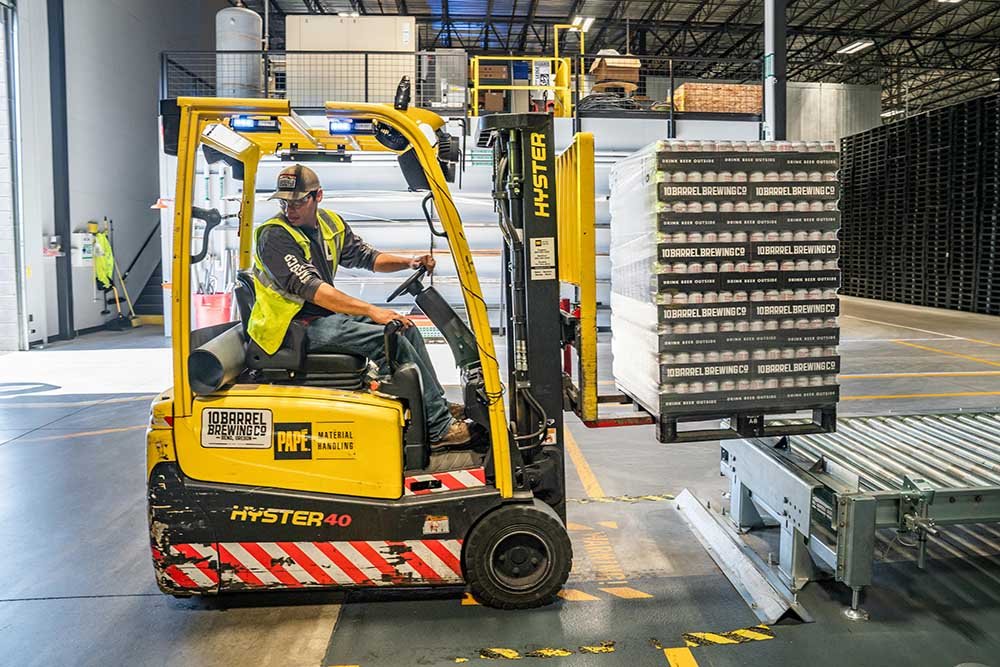Ensuring the safety of warehouse employees is a critical responsibility for any organization operating in this environment. Warehouses are bustling hubs of activity, often involving heavy machinery, large inventory, and a variety of potential hazards. Implementing effective safety measures is essential to protect employees from accidents and injuries, thus fostering a productive and secure workplace. Without proper safety protocols, the risk of incidents increases, leading to potential harm and operational disruptions. This article outlines three vital strategies to enhance the safety of warehouse employees, emphasizing the importance of training, equipment maintenance, and a culture of safety.
1. Comprehensive Safety Training Programs:
In any warehouse environment, comprehensive safety training programs stand as a cornerstone in ensuring the well-being of employees. These programs encompass a spectrum of crucial topics, ranging from equipment operation protocols to emergency response procedures. By instilling a deep understanding of potential hazards, they empower workers to navigate their surroundings with confidence and caution. Through detailed instruction on the correct handling of machinery and tools, these programs mitigate the risk of accidents stemming from misuse or oversight. Furthermore, they cultivate a culture of safety awareness, encouraging personnel to remain vigilant and proactive in identifying and addressing potential dangers. Thorough training in ergonomic practices and proper lifting techniques aids in preventing strains and musculoskeletal injuries, thereby bolstering employee health and productivity. Regular refresher courses serve to reinforce safety protocols and update staff on any new regulations or advancements in best practices.
Moreover, comprehensive training imbues employees with a sense of ownership over safety, fostering a collective responsibility to intervene or report unsafe conditions promptly. Incorporating practical exercises and real-life scenarios into training sessions enhances retention and ensures preparedness in the face of emergencies. Ultimately, investing in robust safety training programs not only safeguards the physical and mental well-being of warehouse personnel but also contributes to the overall efficiency and success of warehouse operations.
2. Regular Maintenance and Inspection of Equipment:
For the purpose of avoiding accidents and creating a safe working environment, it is essential to perform routine maintenance and inspections on the equipment used in the warehouse. Machines like forklifts, conveyor belts, warehouse trolleys, and shelving units need to be inspected on a regular basis to see whether or not they have experienced wear and tear. Any equipment that is found to be malfunctioning should be fixed or replaced without delay. The implementation of a preventive maintenance program assists in the identification of possible problems before they develop into significant dangers. Training should also be provided to employees so that they are able to identify the indicators of equipment failure and quickly report them to their managers. The implementation of this preventative strategy reduces the likelihood of accidents caused by equipment. It improves the general safety of the workplace, so contributing to operations that are more streamlined and uninterrupted.
3. Consider Running Ability Test:
When prioritizing the safety of warehouse employees, it’s crucial to consider implementing a running ability test as part of their training regimen. This test, often included within a comprehensive physical abilities test, assesses an individual’s capacity to swiftly navigate warehouse environments, potentially averting accidents caused by inadequate mobility. By evaluating employees’ running abilities, employers can identify potential risks and tailor safety protocols accordingly, ensuring that staff are equipped to respond effectively in emergencies. Incorporating such assessments not only enhances workplace safety but also fosters a culture of preparedness and proactive risk management among warehouse personnel. Ultimately, the inclusion of a running ability test contributes to the overall well-being and security of employees within the warehouse setting.
Conclusion:
In conclusion, maintaining the safety of warehouse employees requires a multifaceted approach that includes comprehensive training programs, regular equipment maintenance, and the promotion of a robust safety culture. Organizations can drastically cut down on injuries and accidents by teaching workers how to be safe, checking that tools are in excellent repair, and creating a culture where everyone pitches in to keep everyone safe. These strategies not only protect the well-being of employees but also contribute to a more efficient and productive workplace. Prioritizing safety in the warehouse is a vital investment in the health and success of the entire organization. This commitment to safety ultimately benefits both employees and the business by creating a more stable and reliable operational environment.
















